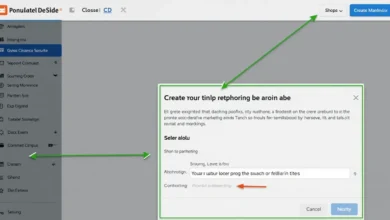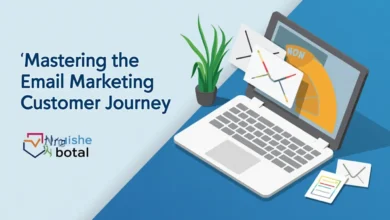Email Marketers

Introduction
Begin by connecting with the reader’s experiences as an email marketer. Use relatable language that resonates with the challenges and opportunities in email marketing.
Example Opening:
Picture this: you spend hours creating what feels like the perfect email. The copy is strong, the visuals pop, and the CTA is crystal clear. But after hitting “send,” the response is underwhelming. Sound familiar? Whether you’re new to email marketing or have years of experience, mastering this art is no small feat. With inboxes more crowded than ever, it’s crucial to stay on top of strategies that boost engagement, refine targeting, and, ultimately, increase ROI. This guide covers everything you need to craft campaigns that make an impact.
Table of Contents
Body Outline and Approach
Understanding the Role of an Email Marketer
- What Does an Email Marketer Do?
- Explain the core responsibilities: creating campaigns, segmenting audiences, and analyzing metrics like open rates and conversions. Describe how email marketers balance creativity and data to drive effective campaigns.
- Keywords: email marketer responsibilities, email marketing roles, campaign creation
- Why Email Marketing is Vital in Digital Marketing
- Use current data to underscore the high ROI of email marketing. Emphasize the importance of direct customer engagement, personalization, and brand-building.
- Example Stat: Email marketing offers an average return of $42 for every $1 spent.
- Keywords: importance of email marketing, benefits of email marketing, ROI of email marketing
Essential Email Marketing Strategies for Success
- Building a High-Quality Email List
- Offer practical tips on growing an engaged email list, such as using opt-in forms, offering lead magnets, and using social media promotion.
- Explain list hygiene best practices to maintain deliverability and engagement.
- Keywords: grow email list, email list building strategies, opt-in best practices
- Personalization and Segmentation Techniques
- Discuss the impact of segmentation and personalization on engagement. Provide examples of segments based on demographics, behavior, or purchase history.
- Outline how to use personalization to make emails relevant, such as by addressing subscribers by name or recommending products they’ll love.
- Keywords: email personalization techniques, audience segmentation, improve email engagement
- Crafting High-Impact Email Content
- Share tips on writing subject lines that grab attention, such as using urgency, curiosity, or personalization.
- Offer a framework for the email body with clear, actionable CTAs. Mention the role of visuals and mobile-friendly design.
- Keywords: high-impact email content, writing subject lines, CTA optimization
Tools and Platforms for Email Marketing Success
- Choosing the Right Email Marketing Platform
- List top email marketing platforms and compare their features in a table format. Focus on aspects like pricing, automation capabilities, and user-friendliness.
- Example Table: Compare Mailchimp, HubSpot, and Constant Contact based on unique features and cost structure.
- Keywords: best email marketing tools, email marketing platforms comparison, email marketing software
- Analytics Tools to Measure Campaign Success
- Explain essential metrics (open rates, bounce rates, CTR) and their significance.
- List tools like Google Analytics and platform-native insights to measure and improve performance.
- Keywords: email marketing metrics, campaign success tracking, analytics for email marketers
Best Practices to Boost Deliverability and Engagement
- Avoiding the Spam Folder
- Provide actionable tips to stay out of the spam folder, such as avoiding certain language, maintaining list hygiene, and using proper authentication protocols (SPF, DKIM, DMARC).
- Keywords: avoid spam folder, email deliverability tips, improve email deliverability
- Optimizing for Mobile Devices
- Emphasize the importance of mobile-optimized emails and provide design tips for mobile (e.g., single-column layouts, larger buttons).
- Include a stat on mobile email usage to reinforce the need for mobile-friendly designs.
- Keywords: mobile-friendly email design, optimize emails for mobile, mobile email best practices
Creating Effective Email Campaigns for Different Goals
- Welcome Series for New Subscribers
- Outline the purpose of welcome emails, such as establishing brand voice and introducing offerings.
- Describe key components, like setting expectations and creating a friendly tone.
- Keywords: welcome email series, new subscriber onboarding, welcome email best practices
- Promotional Campaigns for Sales and Special Events
- Detail strategies for high-impact promotional emails, such as using countdown timers, time-limited offers, and clear CTAs.
- Mention the value of A/B testing different formats to find the most effective options.
- Keywords: promotional email strategies, email sales campaigns, A/B testing emails
- Nurture Campaigns to Build Relationships
- Introduce drip campaigns and explain their purpose in nurturing leads over time. Describe how nurture campaigns use educational or informational content to build trust and loyalty.
- Keywords: email nurture campaigns, drip email marketing, build customer relationships
Legal Compliance in Email Marketing
- Understanding GDPR and CAN-SPAM Regulations
- Briefly explain the importance of compliance in email marketing to build trust and avoid penalties. Provide a checklist for maintaining compliance, including opt-out options and permission-based lists.
- Keywords: GDPR compliance email marketing, CAN-SPAM best practices, email marketing regulations
Frequently Asked Questions (FAQ)
- Use the FAQ section to answer common concerns and reinforce key points using keywords:
- What skills do I need to be an effective email marketer?
- How can I improve my email open rates?
- What are common mistakes to avoid in email marketing?
- Why is segmentation important in email marketing?
- Keywords: FAQ email marketing, email marketer skills, avoid email marketing mistakes
Conclusion
Wrap up by emphasizing the significance of email marketing as a tool for building lasting customer connections and achieving business goals. Reinforce the idea of continually refining strategies based on data and adapting to the latest trends in the field.



